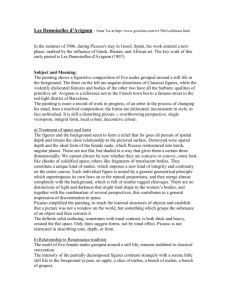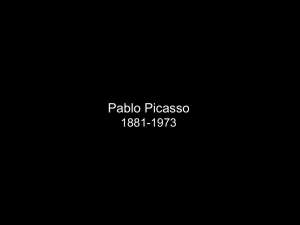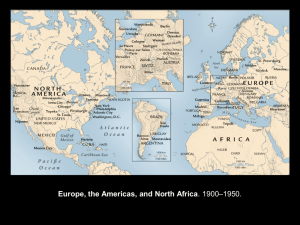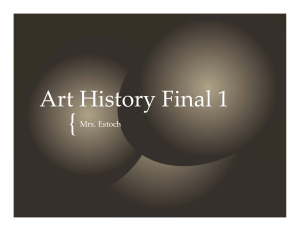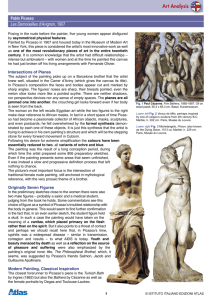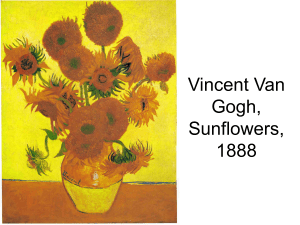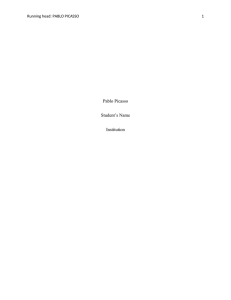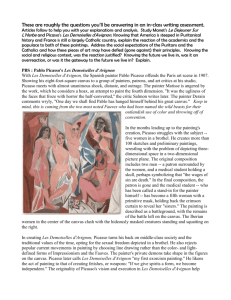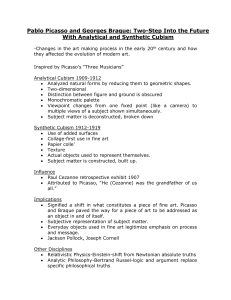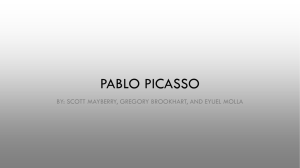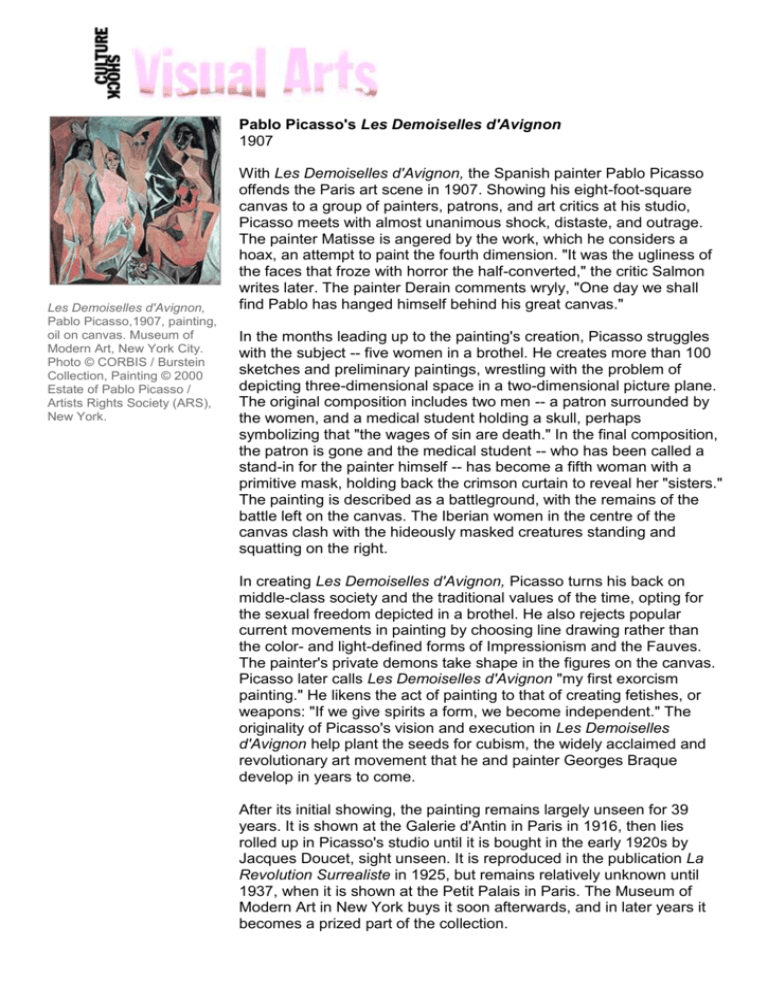
Pablo Picasso's Les Demoiselles d'Avignon
1907
Les Demoiselles d'Avignon,
Pablo Picasso,1907, painting,
oil on canvas. Museum of
Modern Art, New York City.
Photo © CORBIS / Burstein
Collection, Painting © 2000
Estate of Pablo Picasso /
Artists Rights Society (ARS),
New York.
With Les Demoiselles d'Avignon, the Spanish painter Pablo Picasso
offends the Paris art scene in 1907. Showing his eight-foot-square
canvas to a group of painters, patrons, and art critics at his studio,
Picasso meets with almost unanimous shock, distaste, and outrage.
The painter Matisse is angered by the work, which he considers a
hoax, an attempt to paint the fourth dimension. "It was the ugliness of
the faces that froze with horror the half-converted," the critic Salmon
writes later. The painter Derain comments wryly, "One day we shall
find Pablo has hanged himself behind his great canvas."
In the months leading up to the painting's creation, Picasso struggles
with the subject -- five women in a brothel. He creates more than 100
sketches and preliminary paintings, wrestling with the problem of
depicting three-dimensional space in a two-dimensional picture plane.
The original composition includes two men -- a patron surrounded by
the women, and a medical student holding a skull, perhaps
symbolizing that "the wages of sin are death." In the final composition,
the patron is gone and the medical student -- who has been called a
stand-in for the painter himself -- has become a fifth woman with a
primitive mask, holding back the crimson curtain to reveal her "sisters."
The painting is described as a battleground, with the remains of the
battle left on the canvas. The Iberian women in the centre of the
canvas clash with the hideously masked creatures standing and
squatting on the right.
In creating Les Demoiselles d'Avignon, Picasso turns his back on
middle-class society and the traditional values of the time, opting for
the sexual freedom depicted in a brothel. He also rejects popular
current movements in painting by choosing line drawing rather than
the color- and light-defined forms of Impressionism and the Fauves.
The painter's private demons take shape in the figures on the canvas.
Picasso later calls Les Demoiselles d'Avignon "my first exorcism
painting." He likens the act of painting to that of creating fetishes, or
weapons: "If we give spirits a form, we become independent." The
originality of Picasso's vision and execution in Les Demoiselles
d'Avignon help plant the seeds for cubism, the widely acclaimed and
revolutionary art movement that he and painter Georges Braque
develop in years to come.
After its initial showing, the painting remains largely unseen for 39
years. It is shown at the Galerie d'Antin in Paris in 1916, then lies
rolled up in Picasso's studio until it is bought in the early 1920s by
Jacques Doucet, sight unseen. It is reproduced in the publication La
Revolution Surrealiste in 1925, but remains relatively unknown until
1937, when it is shown at the Petit Palais in Paris. The Museum of
Modern Art in New York buys it soon afterwards, and in later years it
becomes a prized part of the collection.


